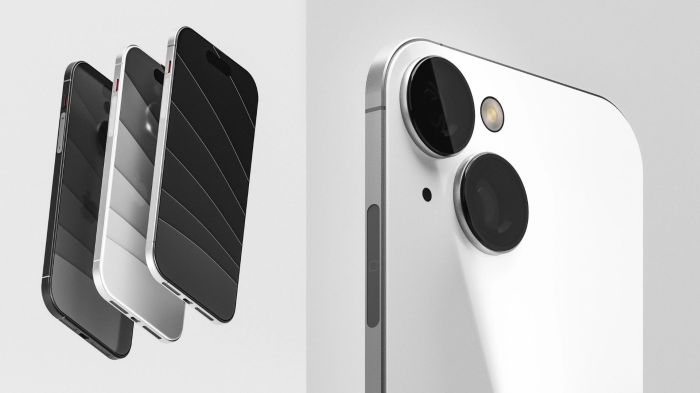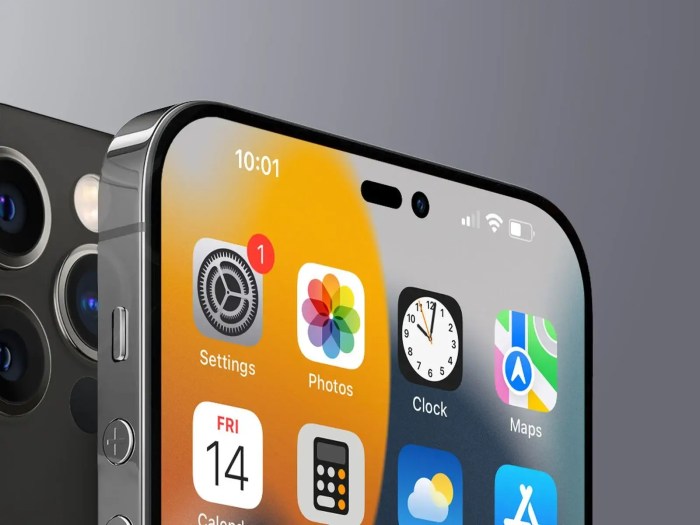The Rumored 4-inch iPhone
Rumors of a new 4-inch iPhone have been circulating for years, with fans and analysts alike speculating about a return to the smaller form factor. While Apple has remained tight-lipped about such plans, the persistent whispers have fueled a wave of anticipation among those who miss the compact design of earlier iPhones.
A Look Back: The History of 4-inch iPhones
Apple’s iPhone journey has seen a variety of screen sizes, with the 4-inch display holding a special place in the hearts of many. Here’s a timeline of Apple’s iPhone models with 4-inch screens, highlighting their impact on the market:
- iPhone 5 (2012): This marked the first iPhone with a 4-inch display, a significant upgrade from the previous 3.5-inch screens. It also introduced a new taller aspect ratio and a slimmer design. The iPhone 5 was met with positive reviews, with users praising its size and performance.
- iPhone 5s (2013): The iPhone 5s retained the 4-inch display and overall design of its predecessor, but added new features like a fingerprint sensor and a faster processor. It continued to be a popular choice for those who preferred a smaller phone.
- iPhone 5c (2013): The iPhone 5c also featured a 4-inch screen, but it was housed in a colorful polycarbonate shell, aimed at a more budget-conscious audience. Despite its affordability, the iPhone 5c wasn’t as successful as its metal-clad counterpart.
- iPhone SE (2016): After the iPhone 6 and 6 Plus introduced larger displays, Apple surprised many with the release of the iPhone SE, a compact device with a 4-inch screen and the powerful internals of the iPhone 6s. This marked a resurgence of interest in smaller iPhones, showcasing the enduring appeal of this form factor.
The 4-inch iPhones were popular among users who valued portability, one-handed usability, and the classic iPhone design. The compact size made them ideal for smaller hands, and the intuitive interface felt familiar and easy to navigate. The 4-inch screen provided a balanced experience between screen size and portability, catering to those who didn’t need or prefer the larger displays of later iPhones.
Market Trends and Consumer Preferences
Apple’s decision to abandon the 4-inch form factor after the iPhone SE was likely influenced by a confluence of factors:
- Shifting Consumer Preferences: Over time, the market shifted towards larger screen sizes. Consumers increasingly demanded devices with more screen real estate for multimedia consumption, gaming, and multitasking.
- Competition: Android manufacturers had already embraced larger displays, offering a wide range of options for those seeking a bigger screen experience. This competitive landscape likely pressured Apple to follow suit.
- Technological Advancements: The introduction of technologies like edge-to-edge displays and curved screens allowed manufacturers to create larger screens without increasing the overall footprint of the device. This enabled Apple to offer larger displays in iPhones without making them significantly bulkier.
The Reemergence of Demand for Smaller Phones
The smartphone industry, known for its relentless pursuit of larger screens and advanced features, is witnessing a fascinating shift. A growing number of consumers are expressing a renewed preference for smaller, more compact phones. This trend, while seemingly counterintuitive, is driven by a confluence of factors, reflecting a desire for a more ergonomic and portable mobile experience.
Reasons Behind the Shift
The resurgence of interest in smaller phones can be attributed to several key factors.
- Ergonomics and One-Handed Use: As smartphones have grown larger, reaching the top of the screen with one hand has become increasingly challenging for many users. Smaller phones offer a more comfortable grip and easier one-handed operation, particularly for individuals with smaller hands or who prefer a more compact design.
- Portability and Pocket-Friendly Size: In a world where we carry our phones everywhere, size matters. Smaller phones are easier to slip into pockets, purses, or even smaller bags, making them more convenient for on-the-go use.
- Concerns About Screen Fatigue: Extended screen time can lead to eye strain and discomfort, particularly for users who spend hours browsing, gaming, or watching videos. Smaller screens, with their lower pixel density, may contribute to a less demanding visual experience, potentially reducing eye fatigue.
- Battery Life: Smaller phones often boast longer battery life compared to their larger counterparts. This is due to the reduced power consumption associated with smaller screens and components.
Other Manufacturers Embracing Smaller Models
The demand for smaller phones is not limited to Apple. Other smartphone manufacturers have also recognized this trend and have released smaller models to cater to this growing segment of the market.
- Sony Xperia Compact Series: Sony has consistently offered its Xperia Compact series, known for their powerful features packed into a compact form factor. The Xperia 5 IV, for example, offers a 6.1-inch display in a compact design, making it an attractive option for those seeking a smaller flagship phone.
- Google Pixel 5a: Google’s Pixel 5a, while not the smallest phone on the market, is a good example of a mid-range phone with a comfortable size. Its 6-inch display strikes a balance between screen real estate and portability.
- Samsung Galaxy S22: Samsung’s Galaxy S22, with its 6.1-inch display, is a popular choice among users who prefer a smaller flagship experience. It offers a balance of size and features, catering to those who want a powerful phone without the bulk.
Potential Benefits of a 4-inch iPhone
A 4-inch iPhone, if it were to be released, could offer several advantages over its larger counterparts. Its smaller size could make it more appealing to users who prefer a more compact and portable device. This could include users with smaller hands, those who value one-handed usability, and those who simply find larger phones to be cumbersome.
One-Handed Usability
A smaller iPhone would be easier to use with one hand, allowing users to reach all parts of the screen without having to stretch their fingers or reposition the phone. This can be particularly beneficial for users with smaller hands or those who prefer a more ergonomic grip. One-handed operation could be especially useful for tasks like browsing the web, texting, or taking photos.
Ease of Pocket Storage
A smaller iPhone would fit more easily in pockets, making it more convenient to carry around. This is especially important for users who prefer to keep their phone in their pocket rather than in a bag or purse. The reduced size could also make it easier to store the phone in smaller pockets like those found in jeans or jackets.
Reduced Screen Fatigue
A smaller screen could reduce eye strain and fatigue, particularly for users who spend a lot of time using their phone. The smaller display would require less eye movement to scan content, which could lead to a more comfortable viewing experience. This could be particularly beneficial for users who read ebooks, browse the web, or play games on their phone for extended periods.
Appeal to Specific Demographics
A smaller iPhone could appeal to a specific demographic of users, such as those who prefer a more compact device. This could include users with smaller hands, those who are accustomed to smaller phones, or those who value portability. For example, individuals who prefer a more minimalist approach to their tech or who are accustomed to older, smaller iPhones might find a 4-inch model more appealing.
Comparison with Larger Screen Models
While a smaller iPhone could offer benefits in terms of one-handed usability, pocket storage, and reduced screen fatigue, it would also come with some trade-offs. For example, a smaller screen would mean less screen real estate for displaying content, which could make it more challenging to view images, videos, or web pages. Additionally, some users might prefer the larger screens of current iPhone models for their immersive viewing experience and enhanced multitasking capabilities. Ultimately, the choice between a smaller and larger iPhone would depend on individual preferences and needs.
Challenges and Considerations for Apple
Reviving the 4-inch iPhone, while appealing to a niche market, presents Apple with a unique set of challenges and considerations. From potential cannibalization of existing models to software optimization, Apple must navigate these hurdles to ensure a successful re-entry into the smaller phone segment.
Impact on Existing Product Lineup and Pricing Strategies
Apple’s current iPhone lineup consists of various models catering to different price points and feature sets. Reintroducing a 4-inch iPhone could disrupt this delicate balance, potentially cannibalizing sales of existing models, particularly the iPhone SE, which already occupies a similar market segment. Apple will need to carefully consider the pricing strategy for the new 4-inch iPhone to avoid creating internal competition and ensure a smooth transition within its product portfolio.
Software Development and User Experience
Apple’s software development efforts are geared towards optimizing user experience across its entire product range. Reintroducing a 4-inch iPhone could require significant adjustments to existing software and user interface elements to ensure seamless functionality on a smaller screen. The challenge lies in maintaining the same level of intuitiveness and user experience on a smaller display, without compromising features or functionality.
The Future of the Compact Phone Market: Rumored 4 Inch Iphone Might Not Launch This Year
The resurgence of interest in smaller phones, fueled by the potential release of a 4-inch iPhone, raises intriguing questions about the future of the compact phone market. Could this be a sign of a broader shift in consumer preferences, or is it simply a niche appeal?
The Potential for Growth
The compact phone market has been steadily shrinking for years, with larger screens becoming the norm. However, the recent interest in smaller phones suggests that there may be a segment of the market that still values portability and ease of use. Apple’s decision to potentially release a 4-inch iPhone could be a strategic move to tap into this niche market and potentially reignite interest in smaller phones.
Influence on Other Smartphone Manufacturers
If Apple successfully reintroduces a 4-inch iPhone and it gains traction in the market, it could influence other smartphone manufacturers to reconsider their product strategies. This could lead to a renewed focus on compact phones, with more manufacturers offering smaller screen sizes as an option. The success of the 4-inch iPhone could set a precedent for the industry, encouraging other brands to cater to a diverse range of consumer preferences.
Long-Term Impact on the Smartphone Industry, Rumored 4 inch iphone might not launch this year
The long-term impact of a 4-inch iPhone release could be significant. It could diversify the smartphone market, offering consumers more choices and potentially driving innovation in compact phone design and features. Furthermore, it could lead to a more balanced market with a wider range of screen sizes, catering to different user needs and preferences. The potential reemergence of compact phones could offer a fresh perspective on the smartphone industry, challenging the current trend towards ever-larger screens.
Rumored 4 inch iphone might not launch this year – While a 4-inch iPhone might not be making its grand entrance this year, the demand for smaller phones is definitely on the rise. Whether Apple listens to the calls for a more compact device remains to be seen. But one thing’s for sure: the future of the smartphone market is full of exciting possibilities, and we can’t wait to see what comes next.
While the rumors of a 4-inch iPhone launching this year are fading, there’s some exciting news on the Android front. Chrome for Android is getting a new feature that lets you add it to your home screen with a banner popup, just like you would with a regular app. chrome for android to get add to home screen banner popup This could be a game-changer for Android users, making it even easier to access their favorite browser.
So, while we might have to wait a bit longer for a compact iPhone, there’s still plenty of cool stuff happening in the mobile world.
 Standi Techno News
Standi Techno News

